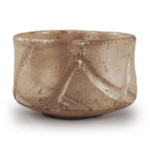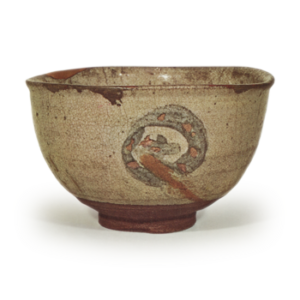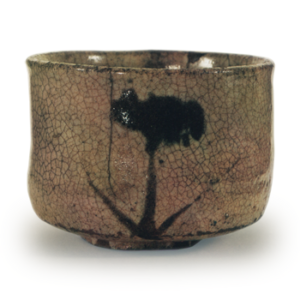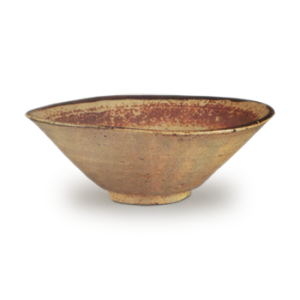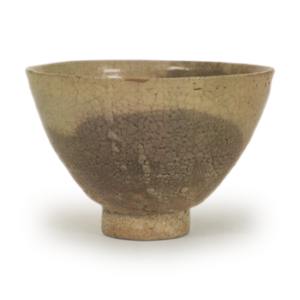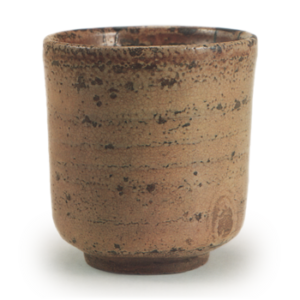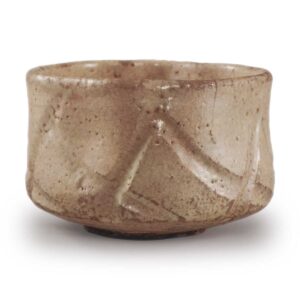
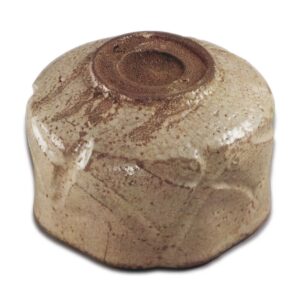
Height: 9.5 – 10.0 cm
Diameter: 12.5 – 14.1 cm
Outer diameter of foot: 7.3 – 7.5 cm
Height: 0.4 cm
There is no signature. This is a large, imposing piece with a solid base. Judging from its size and shape, it is thought that this piece was originally made as a bowl, but was later converted into a tea bowl. In Karatsu, we sometimes see pieces with carved patterns, but it is rare to see a piece with such a bold, deep carved pattern. It is thought that this type of carved Karatsu ware was fired at the Iidomikama kiln in Kishidake during the Momoyama period. This is based on the fact that shards of the same type of pottery were excavated from the kiln ruins above the Iidomikama kiln, and there are no other places where this type of pottery has been found.
The clay body shows a dark gray, withered surface at the back of the foot ring. It is tightly fired, with a rough, dry surface that gives it a wabi-like appearance. The foot ring is carved out, with a thin, crescent-shaped foot ring, and the ring is extremely thin and low. Perhaps because this was not enough, the center of the bottom was further rounded off to create a rare two-tiered foot resembling a snake’s eye.
The potter’s wheel-formed body is bold and massive, with a strong waist and a low, wide base, similar in style to Gosei-guro and Shino. However, the upper part of the body is pressed into a diamond shape while the clay is still soft, so the rim of the bowl is slightly distorted when viewed from above. This is a shape that is suitable for serving dishes or bowls, but not for tea bowls.
The most striking feature here is the thick, deep, diamond-shaped carving that continues around the body. Normally, a tool called a “bata” is used for line carving, but here it is thought that the carving was probably done using an iron hook used for trimming the foot ring. By skillfully using the rounded curved part at the tip of the hook, the impression is left of having been carved deeply with a round-edged tool. The carving is bold and powerful, and the skill with which it is scraped away in one go is truly wonderful. Even though a fairly thick glaze is applied over the line carving, the shadows are deep and clearly cross over each other horizontally and vertically. This is probably the most impressive feature of this tea bowl.
The glaze is applied generously, even to the rim. It is a translucent white glaze made from feldspar and clay ash, which is often seen in the Iidō-gama kilns, and here it has a faint bluish tinge and a dull sheen. There are also cracks and pinholes scattered all over the surface, and the glaze tends to be uneven, especially from the waist to the outer bottom surface, with the glaze curling up in a plum blossom skin pattern, and the fingerprints from when the glaze was applied left rough and unpolished. The way that the glaze has stuck to the foot of the bowl where the glaze has been applied unevenly, with the tips of the fingers sticking out, is a carelessly interesting touch.
There are several other examples of this type of tea bowl, some of which have rough iron-painted lines added on top of the cross-shaped carving, but this tea bowl still stands out from the rest due to its strong composition and sharp carving. This tea bowl is currently in the collection of a certain family in Karatsu City, but its origins are unknown. There are no accessories to mention.

